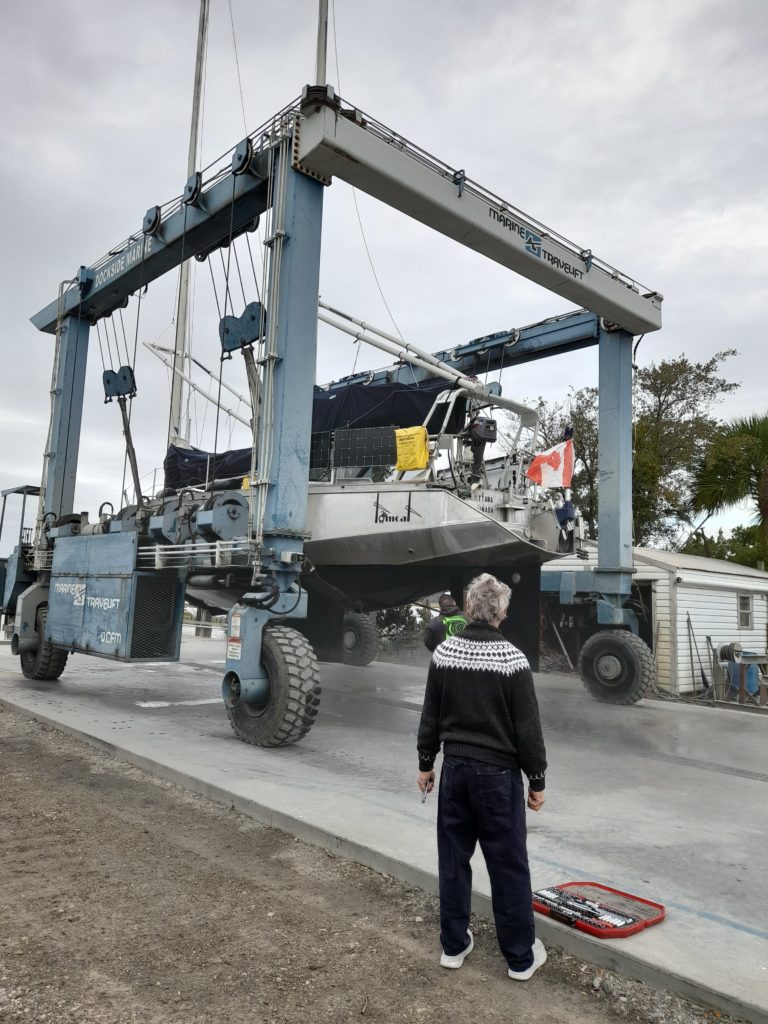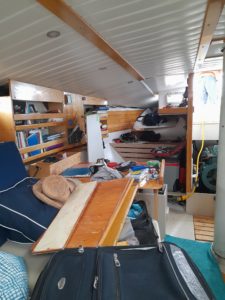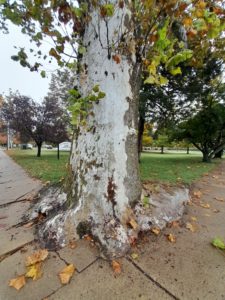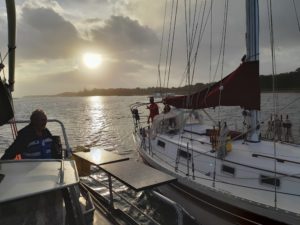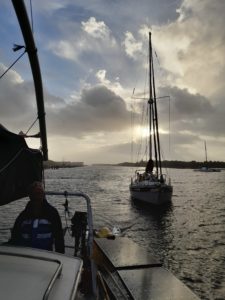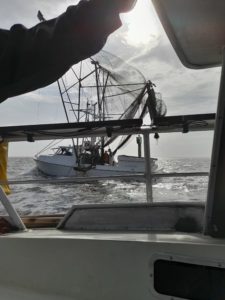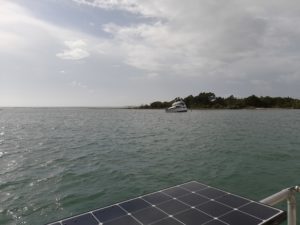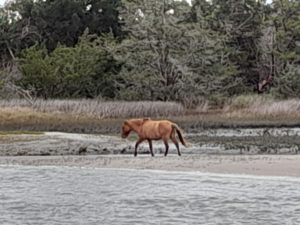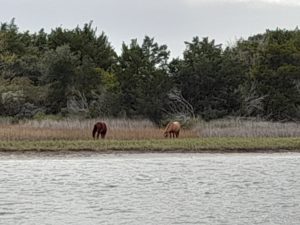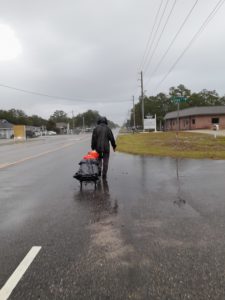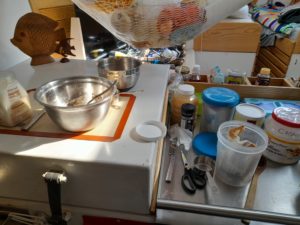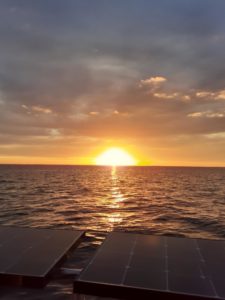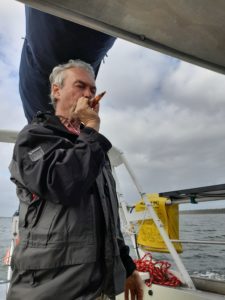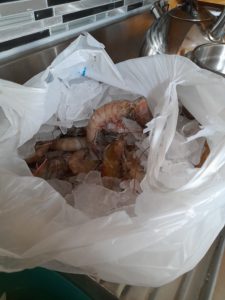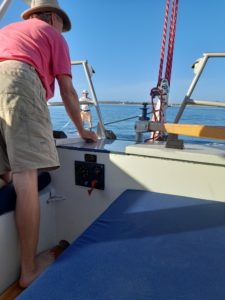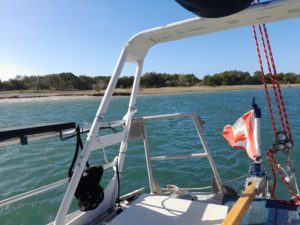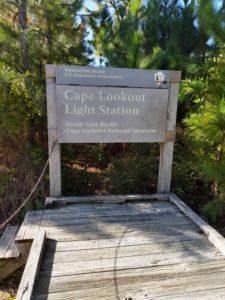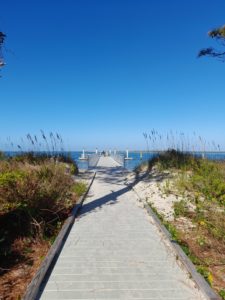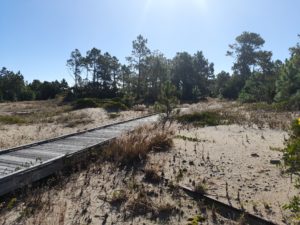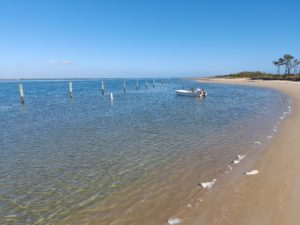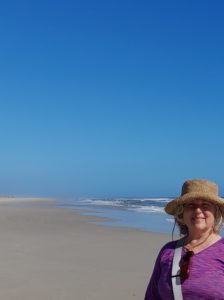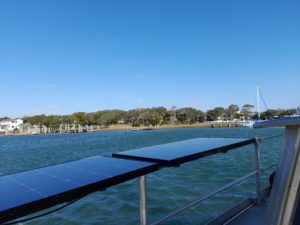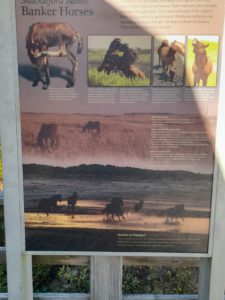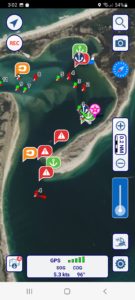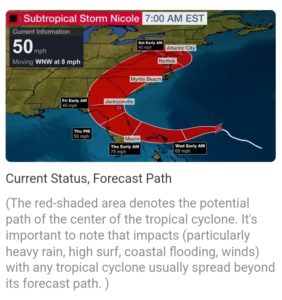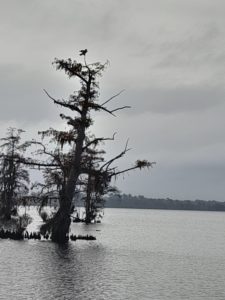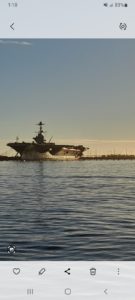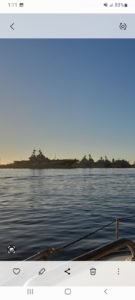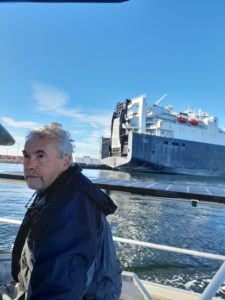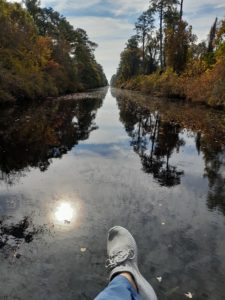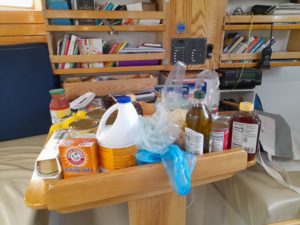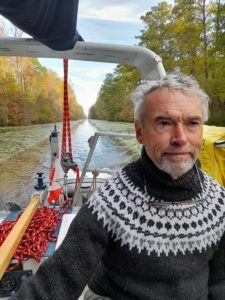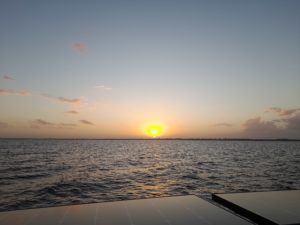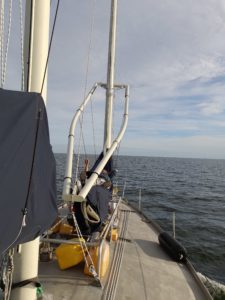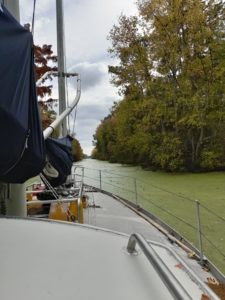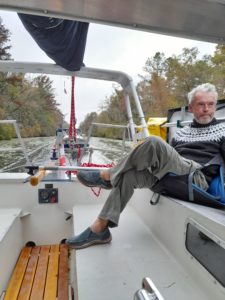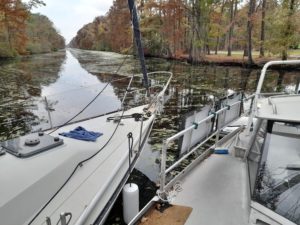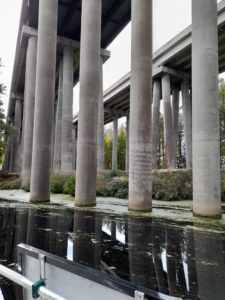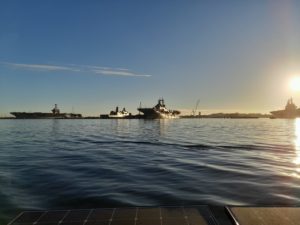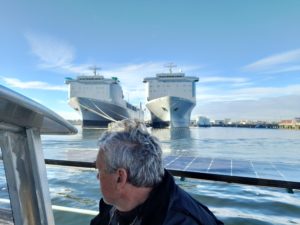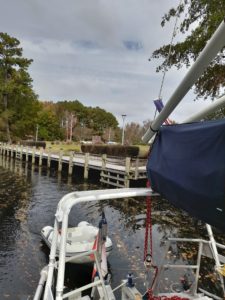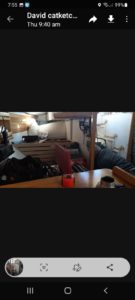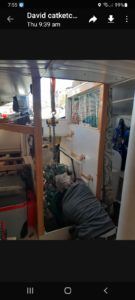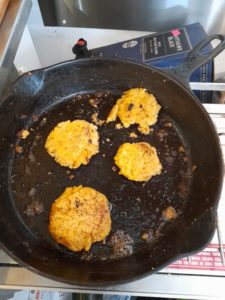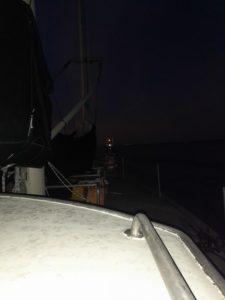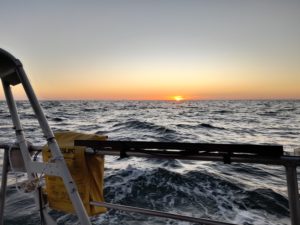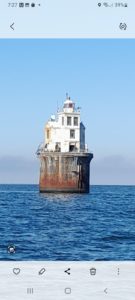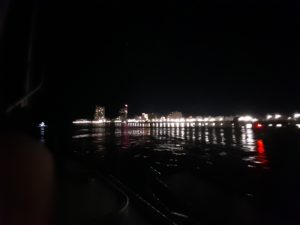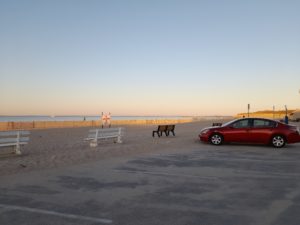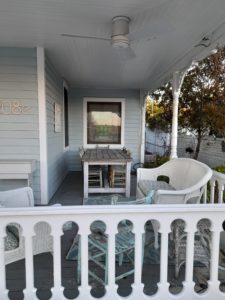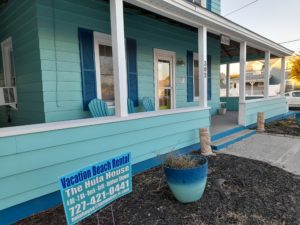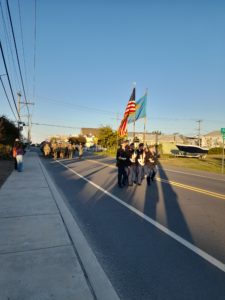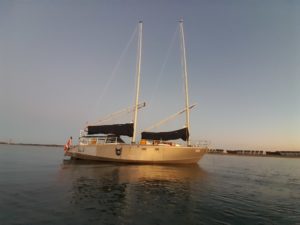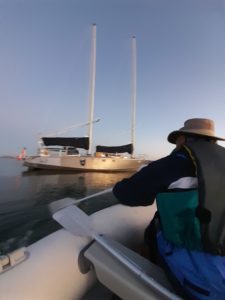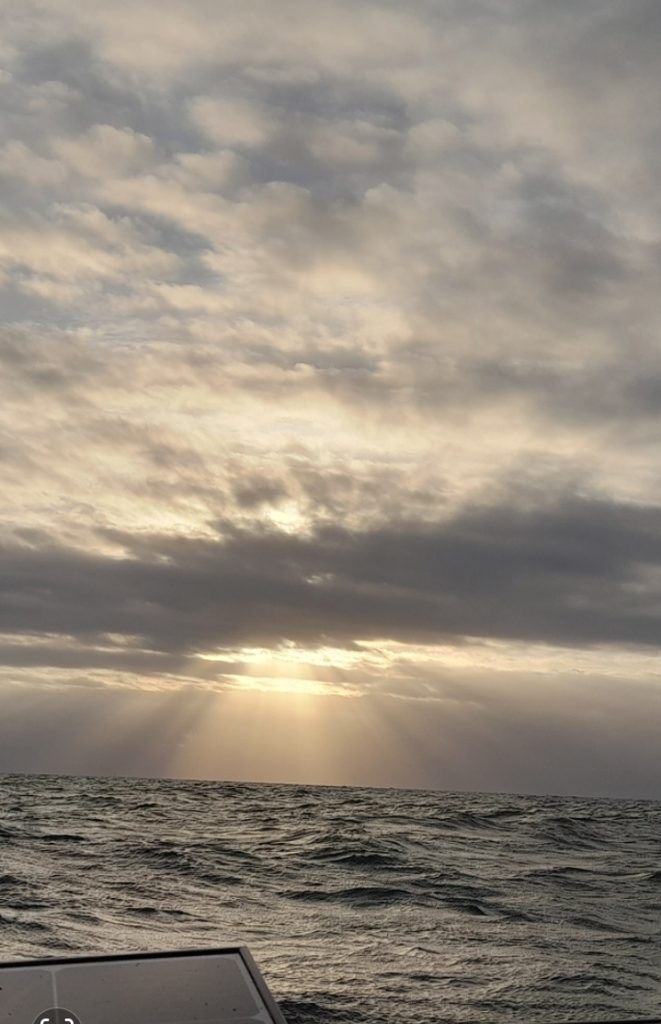
We left Ocean Isle Marina at Ocean Beach N.C. on the 18Nov. I can’t say enough about the people here. They were amazing. They gave us everything we needed to fix the alternator issue and David installed a new alternator. We left on the ICW and left Ocean Beach Inlet which was just south of the marina. It was a tricky inlet, with snake-like 180degree turns and on top of it the navigation aids switched as you changed from heading down the ICW towards offshore. This can confuse people and then they end up on the wrong side of the buoys and ground the boat.
I took over the steering in these parts because David can’t see the screen and the navigation aids at the same time. He needs to put on his glasses to focus on the screen and then take off his glasses to focus on the buoys which makes it hard while steering. I am really kind of proud of my abilities to steer TC with a tiller, something I’m not super comfortable with as it works opposite a wheel. Sometimes it feels like you are about to hit the shore but really you can’t cut corners due to heavy shoaling and you need to trust AQUA MAP, an Italian app that hasn’t let us down. David finds this stressful as you almost have to trust the app and deny what is in front of your boat. Navionics is great for plotting offshore courses but can’t trust the depth and the land images are crappy.
We had decided to play it by ear and if we felt good, keep sailing til we hit Jackson Florida.We checked several weather channels and we were supposed to have winds between 20 and 35 km/h and mild seas- winds from the N, (on our backs) and NE (giving us a little beam from aft (back). We figured they would push us right to Florida. David didn’t feel super comfy with NE winds as they can be stormy, but we are both tired of the ICW and motoring. It’s much harder on a sailboat’s engine and mechanics than sailing. So,,, we exited the inlet and had a beautiful sail down. We felt rested and confident so we decided to go all night. Sailing offshore , in good weather, has to be one of the most relaxing soul stabilizing experiences.
Me helming TC in calm seas. David went to rest down below. The calm before the storm.
Reality hit at around 10pm when the seas started to act up, much higher winds as well. It was dark and we didn’t have access to an inlet that we could enter safely in the dark so we had to keep heading south. As we had not had time to instal the auto-pilot, we had to take turns steering. I would take the helm and David would lie down in the cockpit as the sea was bumpy. It was a long night. We only saw 2 other motor boats heading south.
By morning, the waves were pretty powerful about 15ft high. They were from the NE so we were taking them on the port aft (so left back part of the boat) making it easy to turn the boat to port which would then take the waves right on the side. This would throw TC sideways down the trough and hit the bottom of the trough on the side. One absolutely amazing quality of TC is that she never put the rail in the water. It was amazing and so comforting. In these conditions I think many boats would have had water in the deck and some catamarans may have even tipped, but after a while, the waves didn’t even faze me. Other than being uncomfortable, I knew we were safe.
We searched inlets to head into but could not find any that didn’t have lots of shoaling around the entrance and in these winds and waves, we faced the real risk that we could be pushed into a shoal and then the waves would push us further against the shoal. We decided the safest inlet was St. Mary’s , Georgia. We wanted to get to Jacksonville Florida but we were exhausted and hand steering and now awake for about 37hrs.
As we approached St. Mary’s Inlet, David noticed that our speed was the same even if we went to neutral. The wind was pushing us at about 4knots from behind! This was bad news as it meant we had no propulsion. When he checked, he found that the shaft coupler had disconnected AGAIN from the shaft. This was a fix we had done in Delaware City but as we did not lift the boat out of the water, the fix had not been as complete as it should have been. It may have held except for the extreme pounding of the waves off-shore. We called TowUS (we have a membership, Thank the LORD!!)
Captain Andy was awesome and said he would get there in about an hour. After more than an hour and a half of drifting and trying to keep off the shore but not too far away from the inlet, he let us know that it was too rough for his 22ft zodiac and he had to call the Coast Guard. David and I didn’t want to make a big deal as we were not in immediate danger but we couldn’t put sails up (as you have to motor into the wind to release pressure on the sails to raise them) and we couldn’t motor into an inlet. We had no choice but to have the US Coastguard come. Well, as we were not in immediate danger ( a little water was coming in through the shaft but the bilge pump easily handled it) the coastguard took their time. We drifted around the inlet for another 2 hours before we saw them coming from Fernandina Beach area which was south of us. We were in good spirits but physically exhausted having started the day before at 7am. It was now about 5pm a day later and dusk was coming.
The coastguard had 2 men in the back of their zodiac and 2 in the cabin. They tried to radio instructions but their radio wasn’t copying us. We would relay the answers through the radio at their station who then relayed it to them. David, strapped to a jackline (a rope that runs from the cockpit to the bow that you strap yourself in with a life-line that is attached to your life jacket, was already at the bow waiting for them as he knew they needed to tie the boats together at our bow. They threw a ball with their rope attached to it to David but it bounced back into the sea. Then they threw an oval sack that David was able to catch. The boats had to stay about 50m apart as the waves could push one or the other on top of the other boat if they got too close. David was able to attach their line to our bow cleat. Then David crawled back to the cockpit. During the entire time, my job was to steer us and keep us as stable as possible and away from the coast guard boat yet not too far while trying not to focus too much on David being thrown around on deck – no easy task.
Once the boats were attached, they started the tow. It was long as they had to pull us out to the start of the inlet channel in order to avoid the shoals around the inlet. It took about an hour of towing. About halfway through, they warned us they needed to speed up as the waves were getting bigger and conditions worsening. They told us they would be going at 7knots. Well, it felt like we were in a ride at the ferris wheel except that we were hitting the waves directly on our bow and then it would free fall and slam into the water.
As if that wasn’t exciting enough, David and I were getting used to the roller coaster feel of it when suddenly the mizzen sheet disconnected from the attachment! The stainless steel shackle broke due to the bouncing pressure it had experienced. The boom started moving violently 180 degrees and fast!. I tried to catch it and was pushed back towards the cockpit slamming my ribs on the side . David tried to catch it and was hit on the head with it (later giving him some bruising and lacerations to the face). David then rose onto the stern platform and waited for the boom to come about again and grabbed it and lassooed it with one of our bow lines and was able to tie it to the arch on the back. He then got another rope around it and secured it on each side so it wouldn’t escape. I tried to keep the boat steady and keep an eye on David who was untethered so he could catch the moving boom. I think that was probably the scariest part as the force of the boom could’ve pushed David or I into the water, as the coastguard, oblivious to what was happening to us pulled us at 7knots into the 15ft waves. I have to hand it to David, he is my hero proving himself to be super competent and super brave. After our hearts settled back in our chests we continued being towed. I stayed in the cockpit with David for a while and then decided I needed something softer to sit on, so I went down below and curled up in the quarter berth. The boat shook when it would freefall but it felt solid.
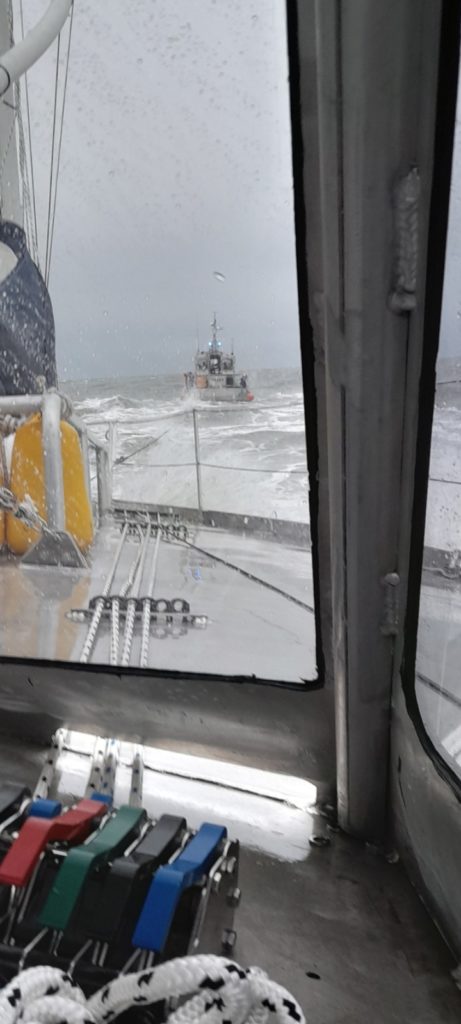
At the point we entered St. Mary’s Inlet, in Georgia, it was dark (about 7pm). Suddenly everything felt calm, no waves!!! I came up top and saw the TowUS zodiac beside the Coastguard as they took over the towing of TC. We waved goodbye to the Coastguard and they went over the radio to wish us luck. I thanked them and told them they were amazing!!! What a well-trained team and just so polite and professional throughout. They never made us feel like we were dumb or putting them out of their way. We saw lots of police and tow boats at the inlet as apparently we weren’t the only ones caught in unexpected violent seas. By the way, we check at least 4 different respected weather sources before heading out anywhere and none of them predicted the conditions we experienced. From now on we will be extra careful if the wind is coming from the N or NE.
The videos fail to show the depth of the waves or the drops from the top of the waves. The Coastguard had to speed up as well as we had to head directly into the waves in order to get around the shoaling of the inlet and into the inlet channel. It took about an hour. Believe it or not our eggs that were stored in the anchor locker in a padded cooler never broke! TC shook hard when she free fell off the waves but she was SOLID!!
Captain Andy from TowUS was awesome as well, he pulled us much more gently, and through calm waters, to St. Mary’s Boatyard where we could be lifted up and a proper fix done on the shaft once and for all. It’s amazing to see how they can pull and push boats into tight spots . We were tied up near the lift so that we could be pulled out easily the next morning as we had no propulsion.
It felt great to be stopped, and TIED to a dock, with no wave action after about 37 hours of sailing/motoring and most of it in very rough seas. David stated that he still felt as if he was moving as the body adjusts to the movement of the waves. I did too but not quite as much.
Well, we made it Georgia right at St. Mary’s River. We could see Florida across the river. We were happy to be tied to a dock in shallow water, no waves. I can say that I never felt I was in immediate danger but I knew there were times when things could have gone south really fast especially with David on deck or trying to catch the flying boom. Maybe for some, it would turn them off of sailing but I felt like we had tested TC and she had passed. It may not have been a hurricane but we had gusts of about 40 knots and 15 ft seas, bad enough that TowUS wouldn’t come out of the inlet. TC was stable throughout. Not once was her rail in the water. The weight in the keel did it’s job and her chines (the hard angles on her hull) kept us upright. My confidence in TC grew that night- now we just need to fix the mechanical issues properly and that requires lifting her out of the water.
